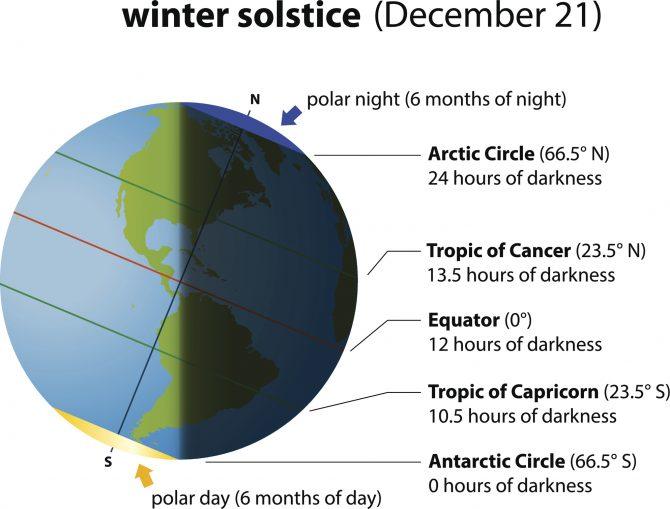This summer has marked an unprecedented astronomical event, as Earth experiences its shortest days ever recorded in history. According to recent data highlighted by National Geographic, the planet’s rotation is accelerating at a pace that has surprised scientists worldwide, raising new questions about the factors influencing our planet’s spin. This extraordinary phenomenon not only challenges previous assumptions about Earth’s stability but also carries potential implications for technology, climate, and daily life. In this article, we delve into the causes behind these record-breaking brief days, the scientific community’s response, and what this means for the future.
Unprecedented Seasonal Shift Challenges Scientists Understanding of Earth’s Rotation
Throughout summer 2024, scientists worldwide have grappled with an unexpected phenomenon: days have been clocking in noticeably shorter than any previously recorded in Earth’s history. This abrupt shift contradicts longstanding models predicting a gradual deceleration in Earth’s rotation due to tidal friction. Researchers attribute this sudden acceleration to a complex interplay of factors including atmospheric dynamics, shifts in ocean currents, and even seismic events. What makes this development particularly puzzling is its rapid onset and the uneven impact across different latitudes, challenging existing paradigms of geophysical stability.
Preliminary data compiled by meteorological agencies and observatories highlight some key indicators of this rotation anomaly:
- Atmospheric wind patterns have intensified in several regions, redistributing mass across the planet’s surface.
- Polar ice melt variability has altered the distribution of Earth’s mass, potentially accelerating its spin rate.
- Unusual seismic activity reported near tectonic boundaries may have contributed to subtle shifts in rotational momentum.
| Factor | Potential Impact | Observed Change |
|---|---|---|
| Atmospheric Winds | Redistribution of mass affecting angular velocity | Increased by 15% |
| Polar Ice Melt | Mass shift leading to moment of inertia change | Ice loss accelerated by 8% |
| Seismic Activity | Crustal movements influencing rotational momentum | Elevated frequency by 12% |
Analyzing the Causes and Implications of the Shortest Days Recorded in History
Scientists have identified several factors contributing to the historic shortening of Earth’s days this summer. Primarily, changes in Earth’s rotation speed are influenced by a complex interplay of geological and atmospheric phenomena. The redistribution of mass caused by melting polar ice caps, along with large-scale oceanic currents, alters the planet’s moment of inertia, leading to subtle but measurable shifts in day length. Additionally, seismic activity such as major earthquakes can momentarily accelerate Earth’s spin by redistributing mass closer to the rotation axis. These variations, although often minuscule, accumulated this year to produce the shortest days ever recorded.
The implications of these record-breaking short days extend beyond pure scientific curiosity, affecting technology and daily life on a global scale. Satellite navigation systems, which require ultra-precise timing to function effectively, must recalibrate to these temporal shifts to avoid signal errors. Moreover, the adjustment of Coordinated Universal Time (UTC) through leap seconds is becoming more frequent and complicated, prompting debates among international timekeeping bodies. Below is a concise summary of the main causes and consequences:
- Melting polar ice: Alters Earth’s mass distribution
- Seismic events: Redistribute Earth’s internal mass
- Ocean currents: Influence rotational velocity
- Satellite systems: Require constant timing adjustments
- Timekeeping challenges: More frequent leap seconds
| Factor | Effect on Day Length | Impact on Society |
|---|---|---|
| Polar Ice Melt | Shortens day by ~0.6 milliseconds | Contributes to time measurement drift |
| Major Earthquakes | Shortens day by ~0.3 milliseconds | Momentarily disrupts precise GPS timing |
| Ocean Current Shifts | Variable impacts on rotation speed | Long-term adjustments needed for clocks |
Adaptation Strategies for Societies Facing Rapid Changes in Daylight Patterns
As communities grapple with unprecedented shifts in daylight duration, innovative adaptation techniques are emerging worldwide. Urban planners are redesigning public spaces to maximize natural light during shortened days, incorporating reflective surfaces and strategically placed lighting to enhance visibility and safety. Meanwhile, local governments are promoting flexible work hours and remote work policies, allowing individuals to optimize productivity around dwindling daylight. Energy conservation efforts have also intensified, with a push toward LEDs and smart lighting systems that adjust brightness based on ambient light, reducing overall consumption.
On a societal level, there is growing emphasis on mental health support, as reduced sunlight is linked to increased seasonal affective disorder cases. Community programs now include outdoor activities designed to increase daylight exposure during available hours, coupled with educational campaigns about vitamin D and its benefits. Below is a summary of key adaptation measures currently gaining traction:
- Flexible scheduling for education and work
- Redesign of urban infrastructure to enhance daylight use
- Implementation of adaptive lighting technologies
- Community mental health initiatives targeting seasonal mood shifts
- Public awareness campaigns on nutrition and well-being
| Strategy | Primary Benefit | Example Locations |
|---|---|---|
| Smart Lighting Systems | Energy Efficiency | Oslo, Tokyo |
| Flexible Work Hours | Increased Productivity | San Francisco, Berlin |
| Outdoor Community Activities | Mental Health Support | Reykjavík, Vancouver |
| Urban Space Redesign | Maximized Daylight Exposure | Stockholm, Melbourne |
To Wrap It Up
As this unprecedented astronomical event captures global attention, scientists continue to investigate the underlying causes behind Earth’s shortest days in recorded history. While the phenomenon may have subtle effects on our planet’s rotation and climate, its full implications remain a subject of ongoing study. Stay tuned to National Geographic for the latest updates as researchers work to unravel the mysteries behind this remarkable summer occurrence.
